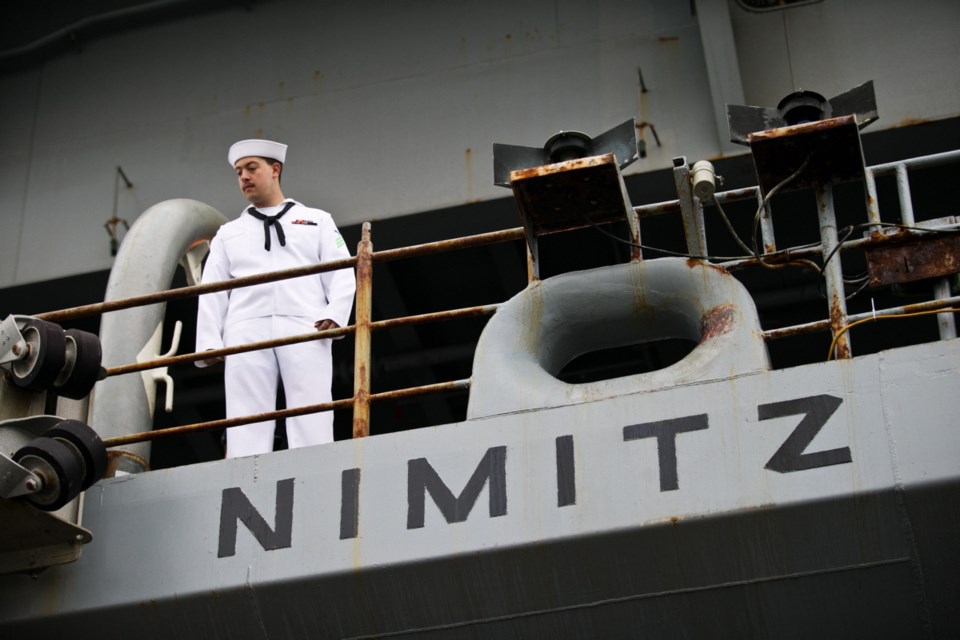One of the world’s largest warships arrived in Greater Victoria on Friday, bringing thousands of sailors to the capital.
The USS Nimitz super-carrier, based in Everett, Washington, and named after Admiral Chester W. Nimitz, commander-in-chief of the U.S. Pacific Fleet during the Second World War, arrived Friday and is sitting in Juan de Fuca Strait near Esquimalt Harbour.
The 1,115-foot nuclear-powered ship regularly carries about 65 aircraft, including fighter jets, helicopters and Prowler warfare aircraft, but the flight deck was bare Saturday.
Capt. JJ (Yank) Cummings, a former Top Gun fighter pilot with about 750 flights under his belt, described pitch-black night landings that left men of seeming physical and mental steel disembarking with “sewing machine” legs.
“I’ve done it so many times where you get out and say, ‘Oh my God, I’m glad I stopped,’ ” he said.
“Imagine: no moon, lousy weather and the deck pitching 20 feet … a thousand miles from land and low on gas …”
Takeoffs are more exhilarating, he said, with a G-force similar to the best roller-coaster in the world. “It’s the ride of a life.”
In the final moment, Cummings said, there’s no turning back.
“When you salute and that button is pushed, there is nothing on God’s green Earth that will stop you from going off the front end,” he said. “You could go to idle, step on the brakes and that jet is not stopping.”
Cummings compared the force of the catapult propelling jets off the flight deck to “a 40-tonne double-barrel shotgun below deck.”
Despite all the advanced technology aboard ship, which was commissioned in 1975, the handler in the flight deck control room uses a table-top tracking system — around since the First World War — to keep track of the aircraft on the deck.
Push-pins, nuts and bolts are used to indicate the status of aircraft.
A blue push-pin sitting on top of a plastic model aircraft indicates something different than a green pin. And a nut flat on a model means something different than a nut on its side.
Technology has never proven as fast as this “pinology” in keeping track of the needs — urgent or otherwise — of the aircraft on deck.
“We have a multibillion-dollar aircraft carrier and the flowing of aircraft run by pins, nuts, washers,” Cummings said. “They have tried to make this electronic — they couldn’t do it quickly and accurately because the change is just so dynamic.”
The warship’s last day in port is Monday.



